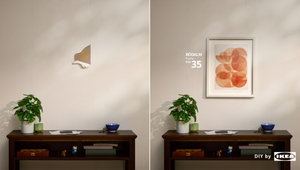
Why Today’s Brands Need to Connect

So, you’ve just left dinner or a movie, and you’re walking through a dimly lit car park (or maybe the power’s gone out – as we saw in New York City this summer, it happens). You fumble in your pocket for your car key and press the button to locate your car. It bleeps its location, and the headlights go on.
But imagine it’s not just your car’s headlights. The headlights of every car from the same brand in the lot go on too, pointing their beams to light your way. Because your car brand has been experimenting with advanced headlight technology for years and generating myriad new ideas.
It’s an excellent example of how ‘connected’ brands should think and behave. They look at the total experience they create for people and by doing so often deliver more value for their consumers. And in today’s world, it usually – but not exclusively – means using technology to enable the brand to really live in people’s life.
Agencies should be looking at the bigger experience picture too. We sometimes get distracted by trinkets: the one-off project, the ambitious campaign, the new social platform. But that’s like walking down the Champs-Elysées and not taking a step back to admire the symmetry of one of the world’s most beautiful avenues. The trinkets prevent us from bringing all the right elements together and making the overall system awesome.
Nike – an overused example but for good reason – has used wearable technology to transform the experience of sport, and enabled everyday athletes to monitor, share and improve their performance. Everything from the swoosh, to the cinematic ads, the innovative shoe design, and their latest athletes’ maternity policies announcement is building the brand by connecting with people on two levels: emotional and practical.
An interesting contrary example is Uber; you might think that the brand was born connected because it’s an app. But it hasn’t succeeded in creating an emotional bond with people – in fact, it does the contrary in many cases. It has become a disposable service. Uber makes life easier when required, but so does Lyft, Curb, DiDi in China, Ola in India. And a decade after its founding, the company is losing more money and growing more slowly than ever.
Businesses are starting to realise the importance of a raison d’être beyond profits. And that their raison d’être has to move beyond awareness into action. A few weeks ago, chief executives from The Business Roundtable, including the leaders of Apple and JPMorgan Chase, argued that companies must go beyond delivering value to shareholders. In particular, they highlighted investing in employees and providing value to customers.
Airbnb does much more than answering holiday accommodation needs. It brings travellers closer to the communities they visit and makes them feel at home abroad. The brand has a clear purpose: ‘Don’t go there – live there’. And in a world that can seem more unpredictable and complicated than ever, brands like Airbnb can make people feel more secure. They’ve also found ways to have an impact on communities, for example, working with their hosts to offer free places to stay for relief workers and evacuees during weather emergencies.
People are - rightly - holding businesses accountable, pushing them to demonstrate the positive impact they’re having, large or small, on society. According to the 2019 Edelman brand trust survey, 53% of us expect brands to get involved in at least one social issue that is not directly related to their business.
And so, we’ve seen brands encouraged to take political stances they might not have adopted in the past. P&G has spoken out about racism with The Talk. Bodyform called into question the taboos around period blood. And brands already known for their strong values are taking it further, like Patagonia refusing to sell corporate branded products to ecologically damaging companies.
Not all connected brands are the same. But they all do two key things: connect emotionally with people and use technology to improve people’s experience in the real world.
A raison d’être creates an emotional connection which is crucial to a brand’s success. But brands also have to activate this emotional connection in people’s lives with a tangible presence - or experiences. And when the two work perfectly together, we call it a connected brand.
To end with a thought from Steve Jobs, the granddaddy of connected brands, ‘You’ve got to start with the customer experience and work backwards to the technology.’
This is the real secret of any business and brand success. And it won’t change any time soon. So, let’s not get distracted by trinkets.















